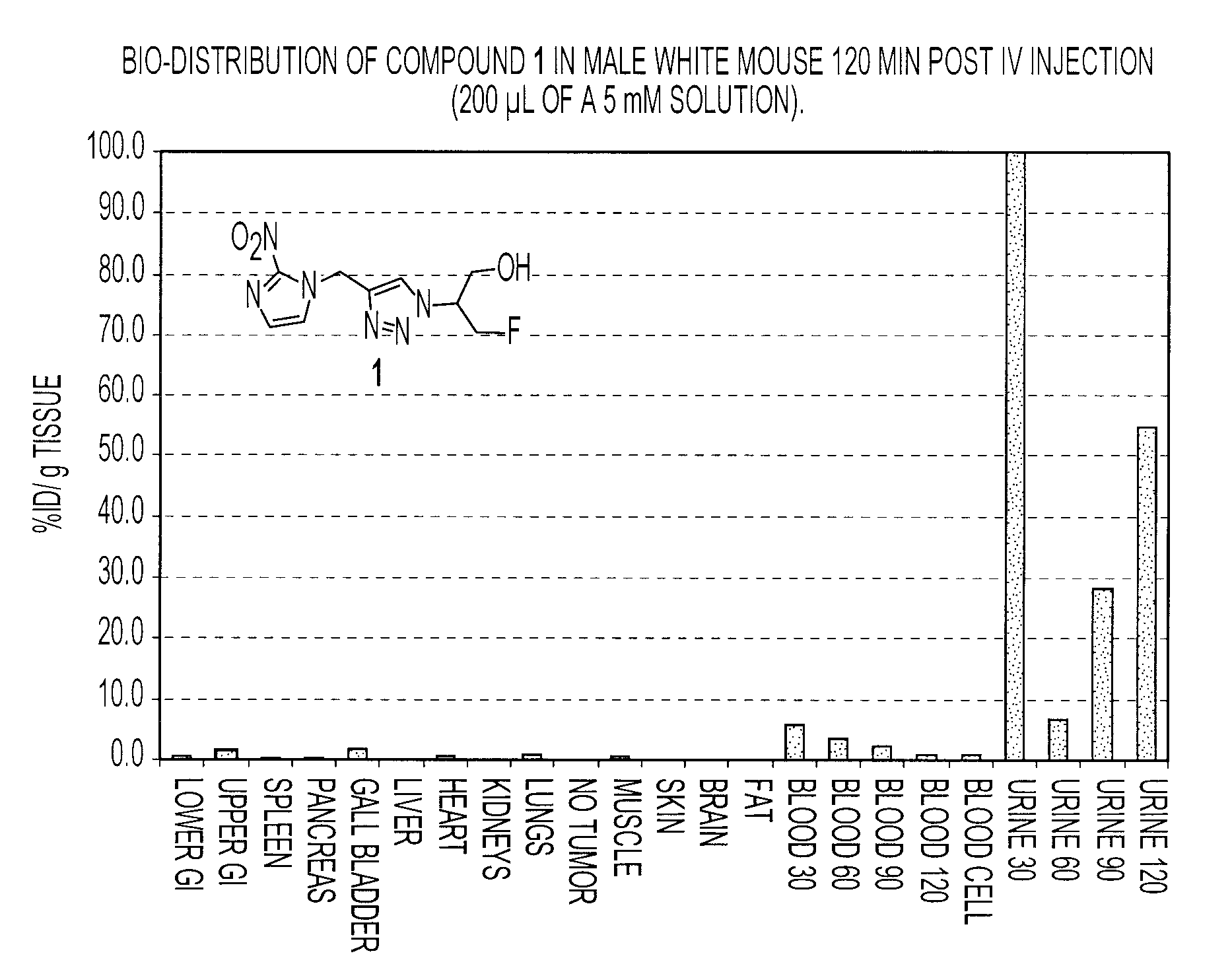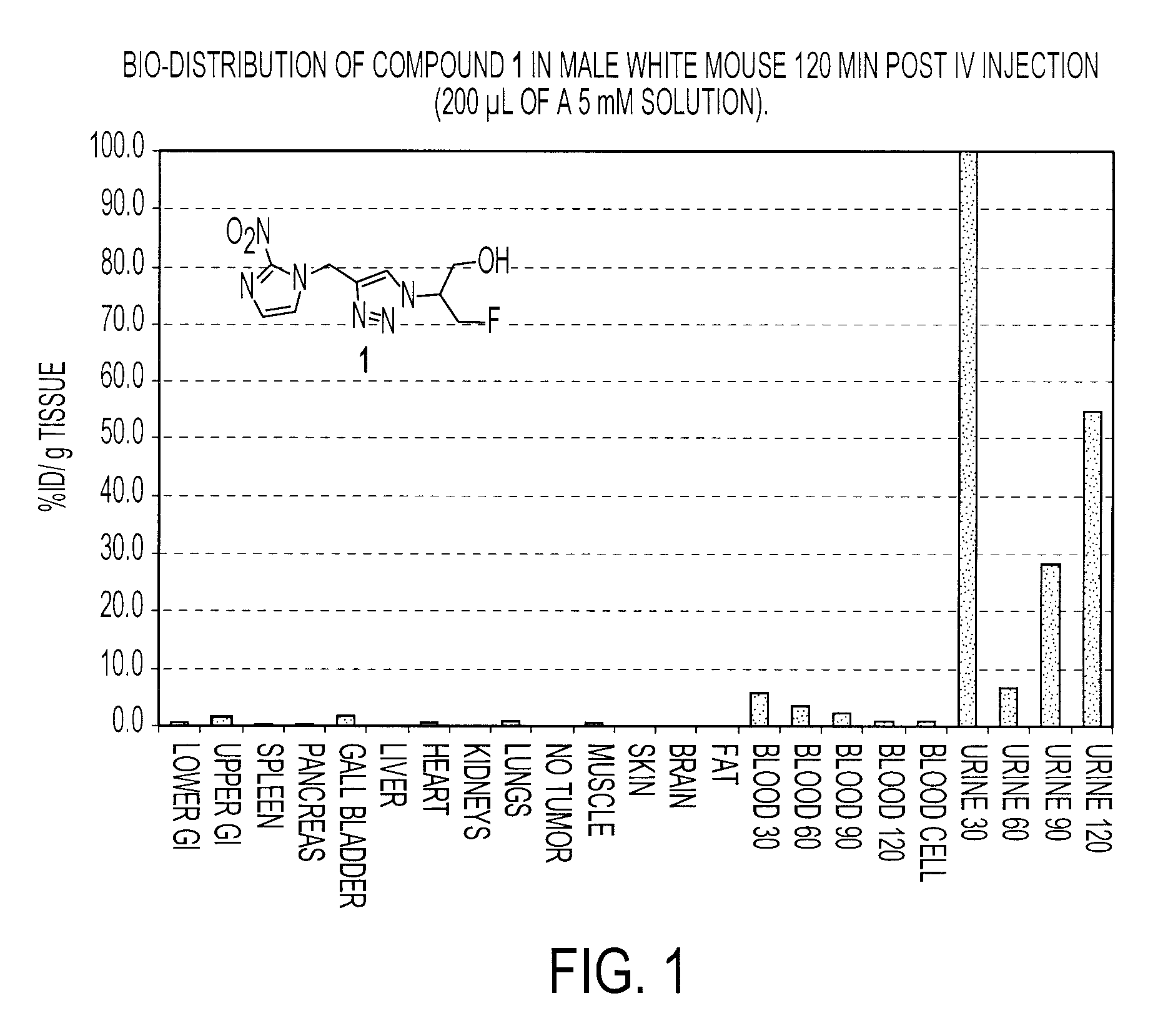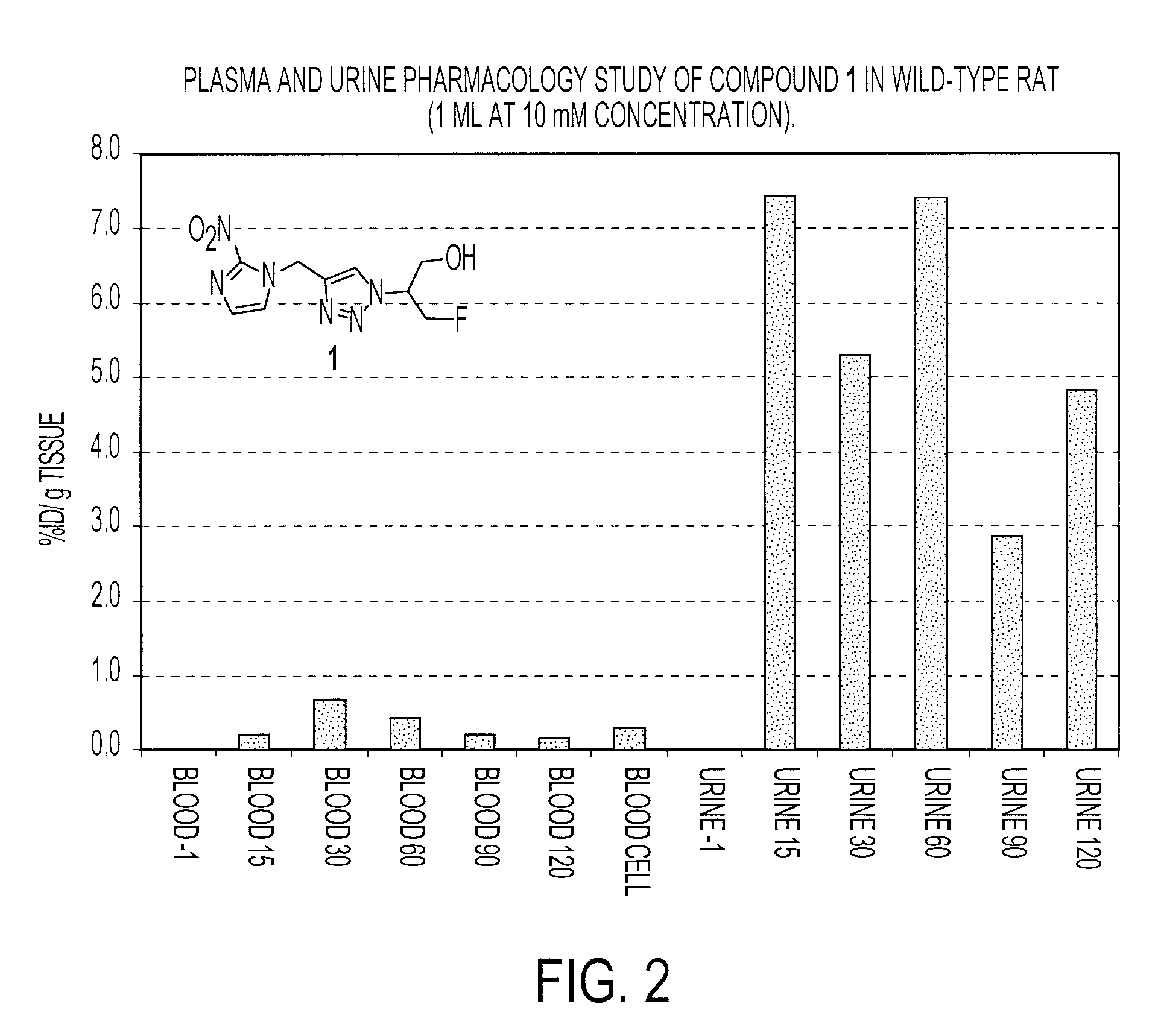Nitro-Imidazole Hypoxia Imaging Agents
a technology of nitroimidazole and imaging agent, which is applied in the field of radioactively labeled bioreducible tracers, can solve the problems of limiting the specificity of fdg-pet imaging for monitoring cancer, limiting the sensitivity of pet for tumor response prediction, and affecting the treatment regimen and outcome. , the propensity to proliferate and propagate, and the accurate assessment of the hypoxic nature of a patient's cancer
- Summary
- Abstract
- Description
- Claims
- Application Information
AI Technical Summary
Benefits of technology
Problems solved by technology
Method used
Image
Examples
Embodiment Construction
[0076]The present invention will now be described more fully hereinafter. This invention may, however, be embodied in many different forms and should not be construed as limited to the embodiments set forth herein; rather, these embodiments are provided so that this disclosure will be thorough and complete, and will fully convey the scope of the invention to those skilled in the art.
[0077]The novel compounds described herein contain the requisite 2-nitroimidazole core that is necessary for imaging hypoxic tumors. Mechanistically, intracellular bioreduction under hypoxic conditions modifies the 2-nitroimidazole core which then undergoes covalently-mediated localization within the cell. Under oxic conditions, the bioreduced nitroimidazole returns to its native state and diffuses freely into and out of the cell.
[0078]The novel compounds disclosed herein also display favorable imaging pharmacokinetic properties. The compounds possess favorable clearance properties via renal excretion, t...
PUM
| Property | Measurement | Unit |
|---|---|---|
| detection wavelength | aaaaa | aaaaa |
| temperature | aaaaa | aaaaa |
| v/v | aaaaa | aaaaa |
Abstract
Description
Claims
Application Information
 Login to View More
Login to View More - R&D
- Intellectual Property
- Life Sciences
- Materials
- Tech Scout
- Unparalleled Data Quality
- Higher Quality Content
- 60% Fewer Hallucinations
Browse by: Latest US Patents, China's latest patents, Technical Efficacy Thesaurus, Application Domain, Technology Topic, Popular Technical Reports.
© 2025 PatSnap. All rights reserved.Legal|Privacy policy|Modern Slavery Act Transparency Statement|Sitemap|About US| Contact US: help@patsnap.com



